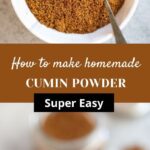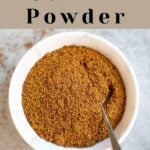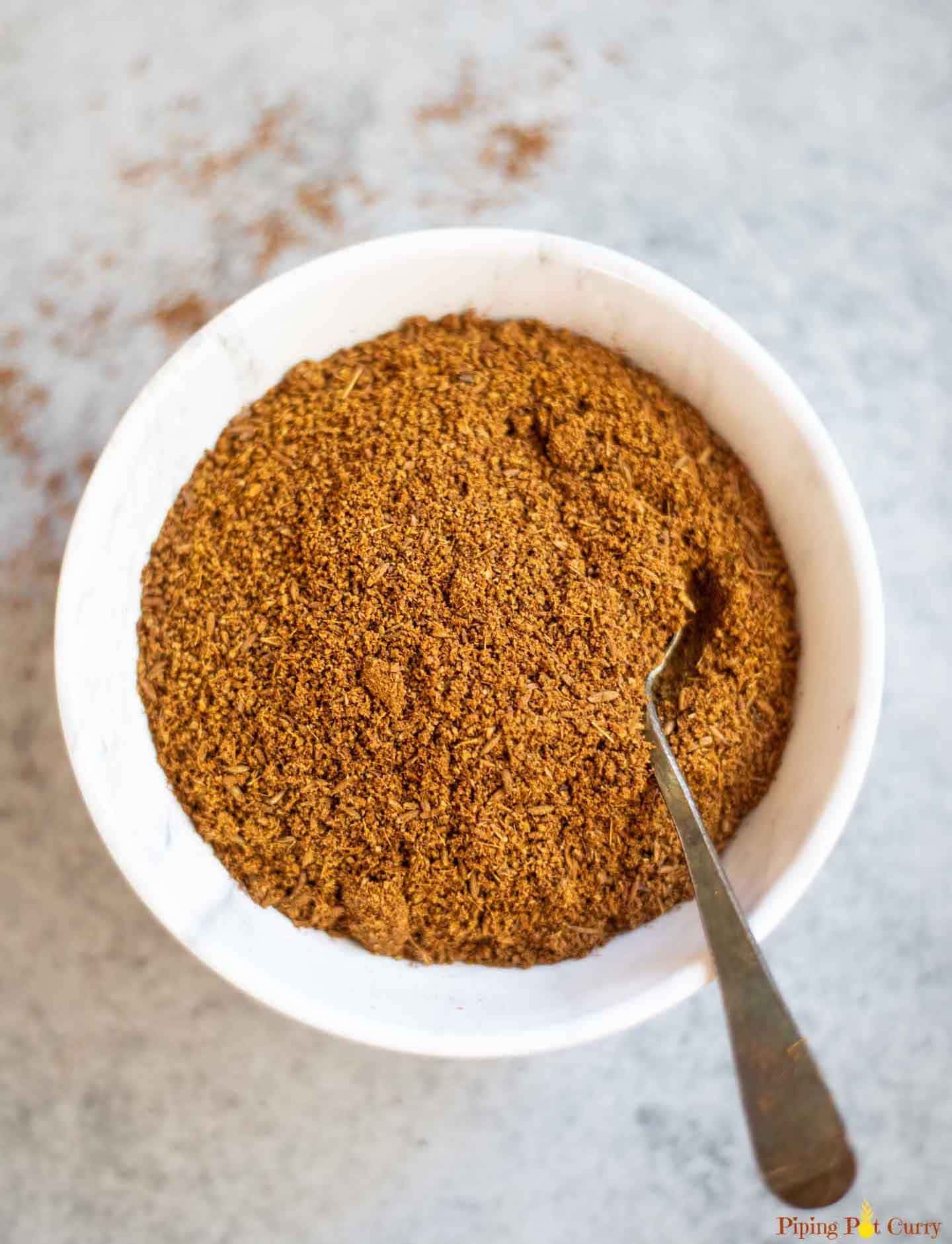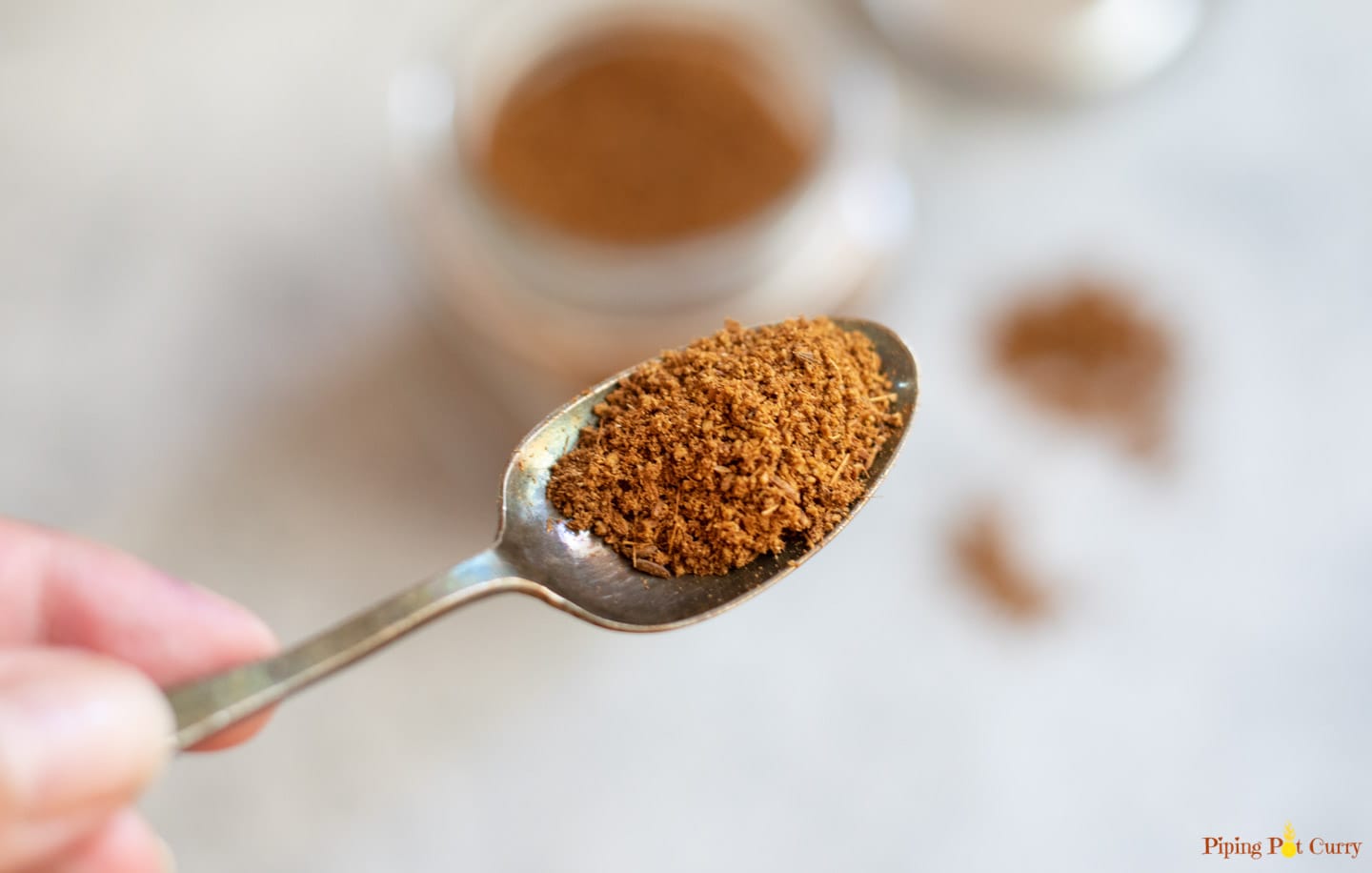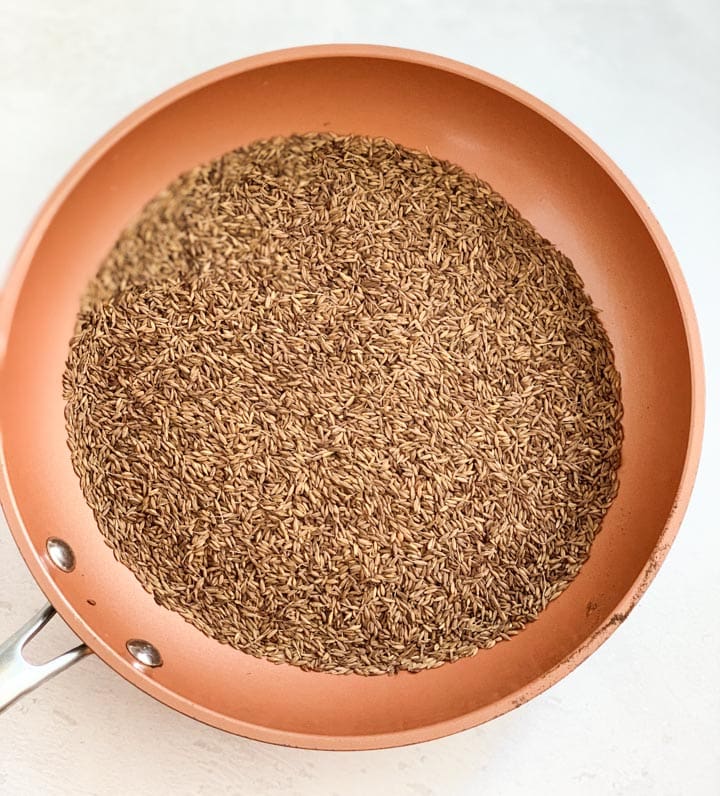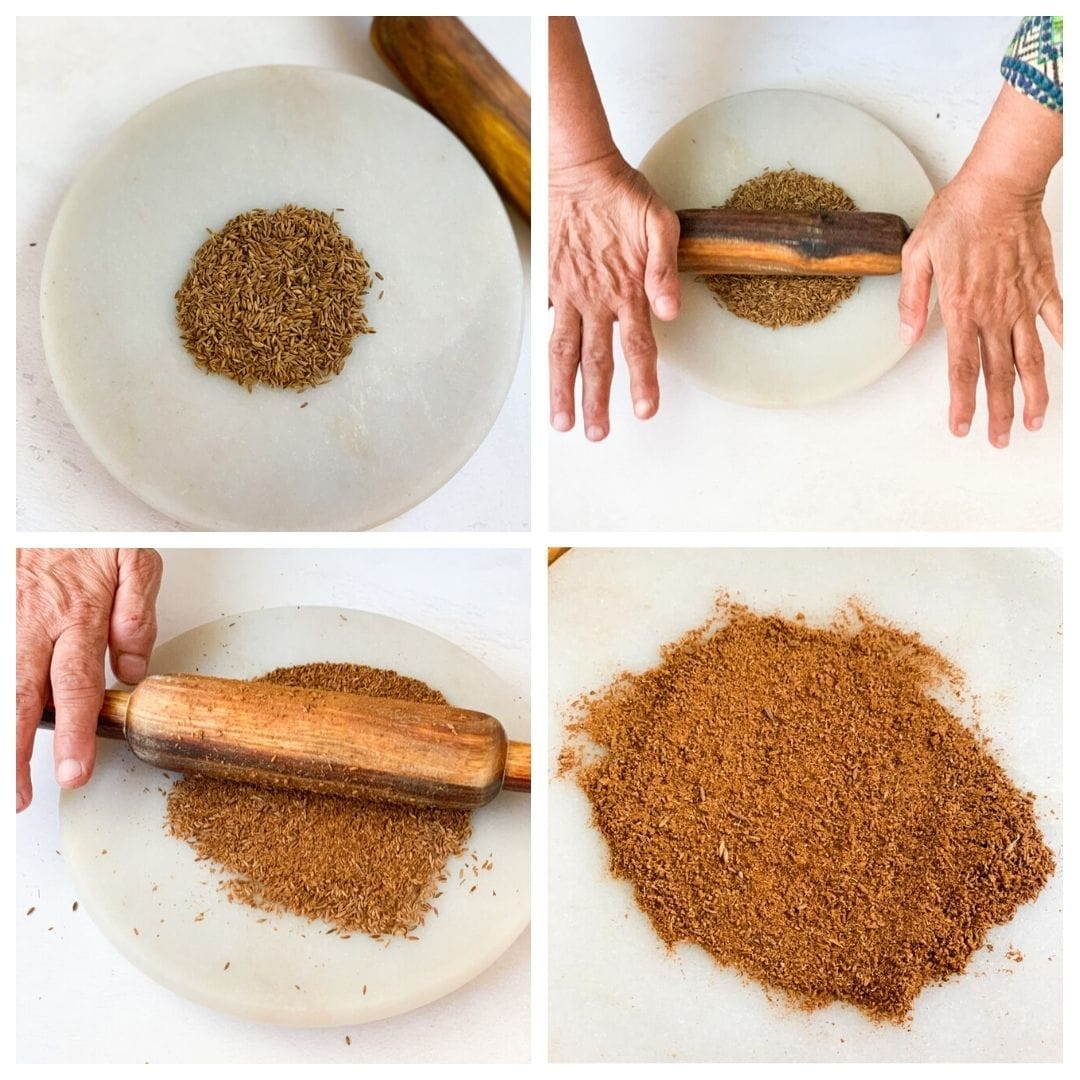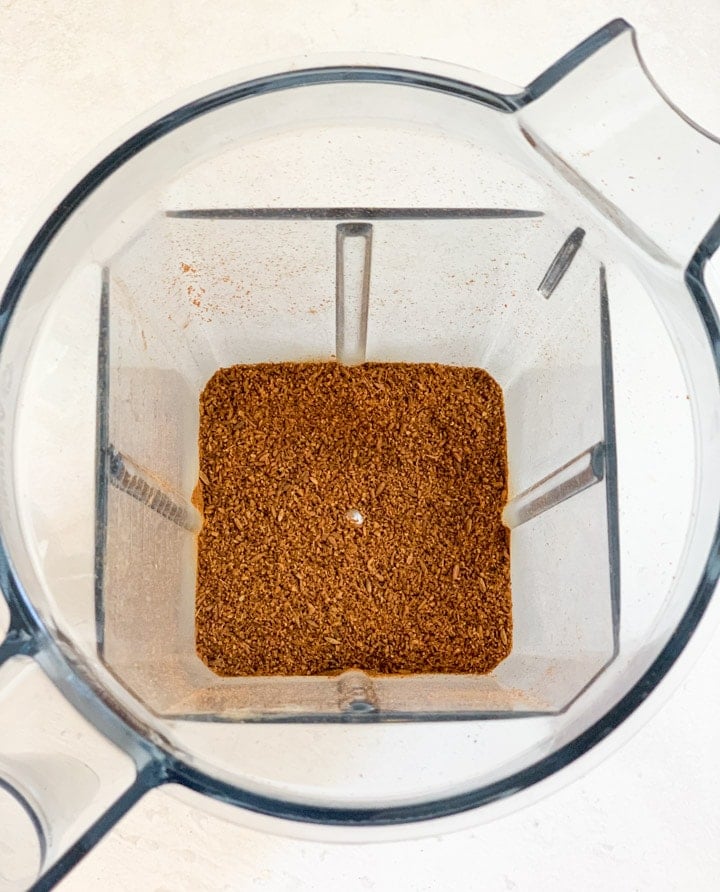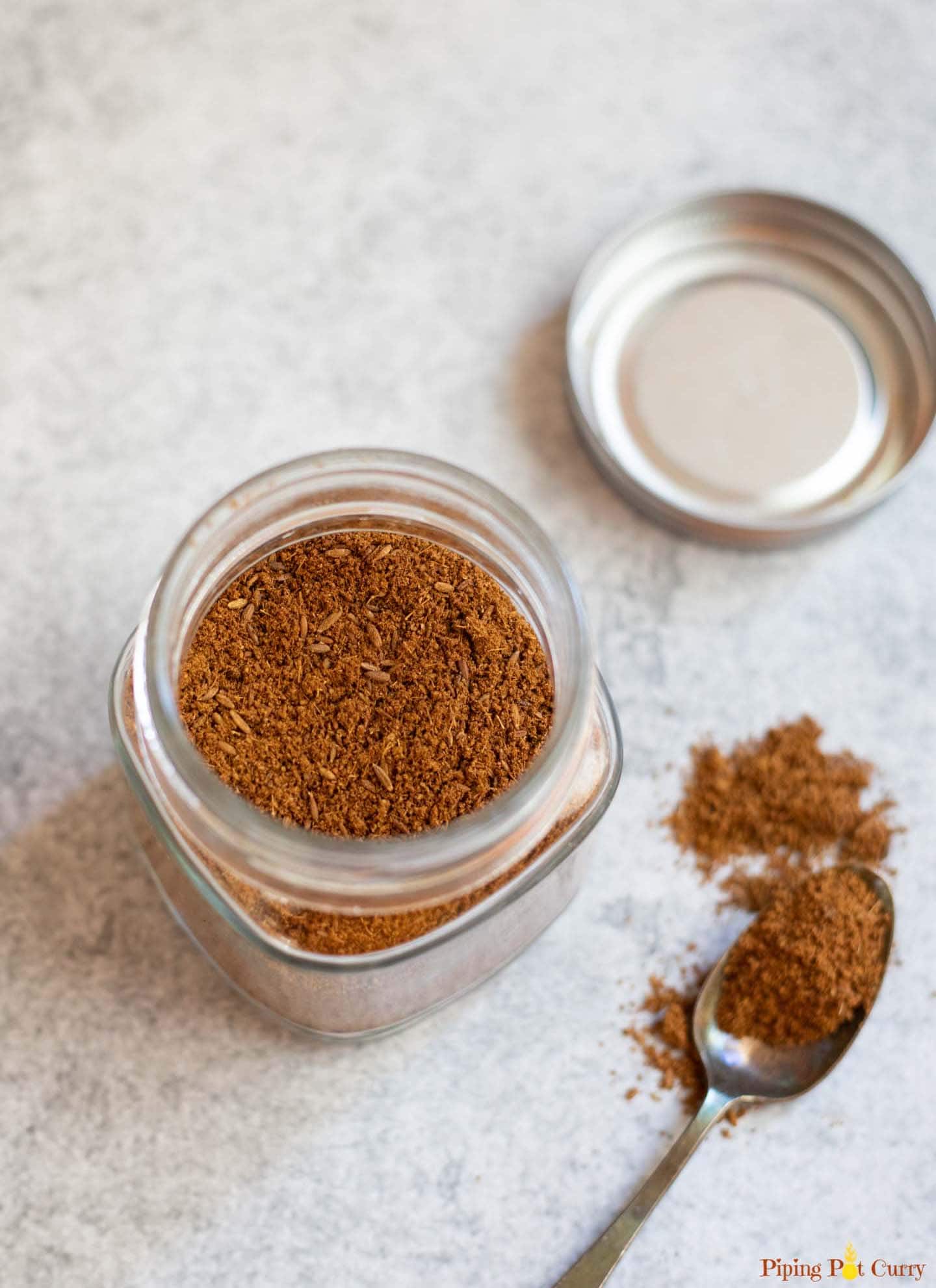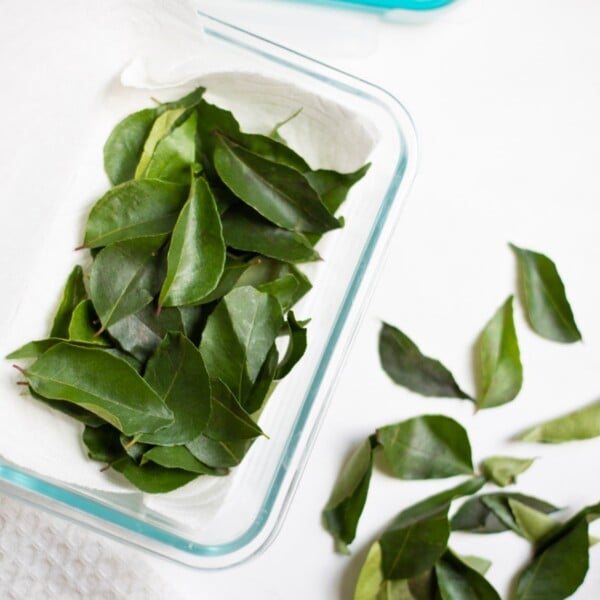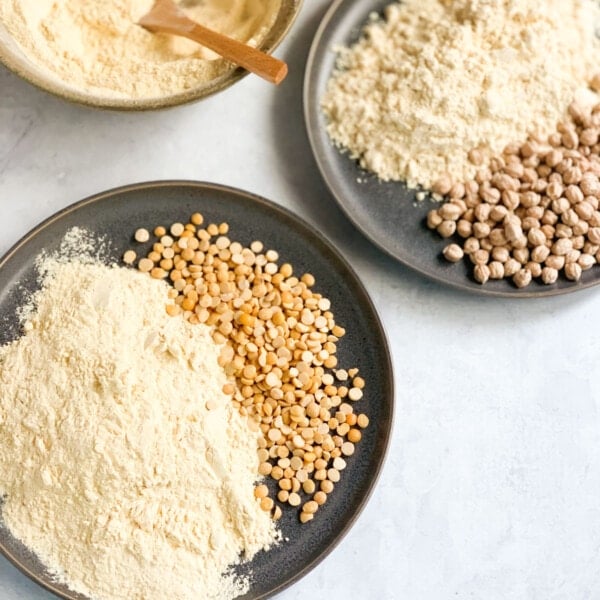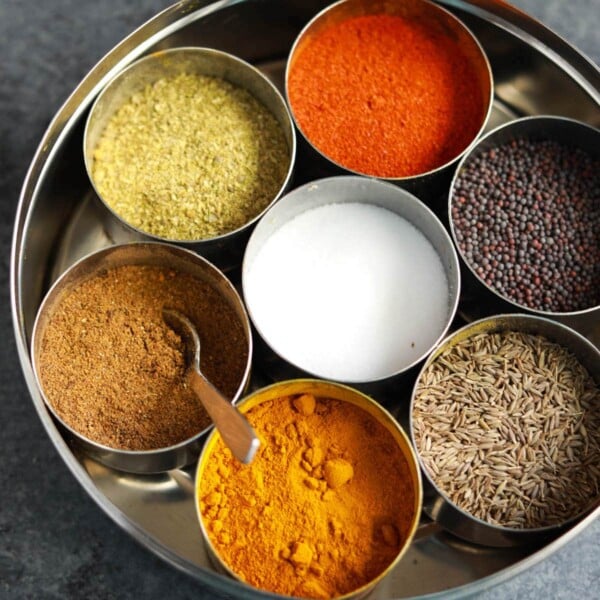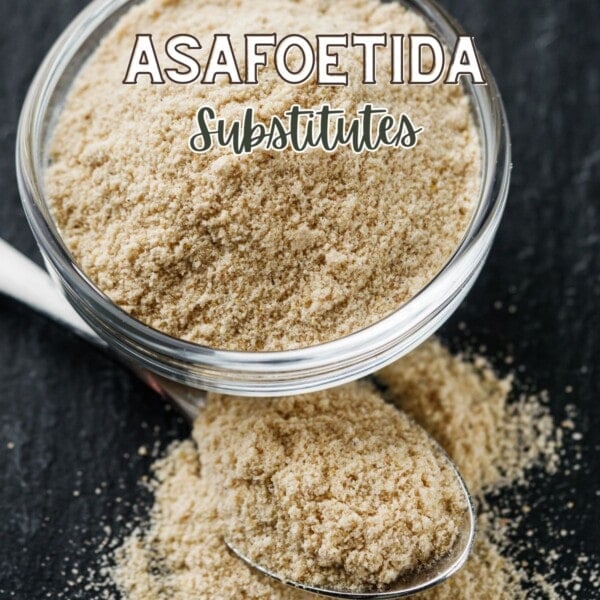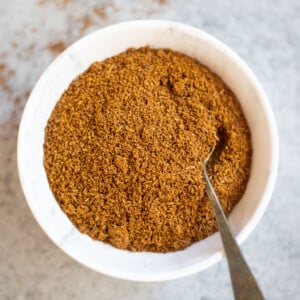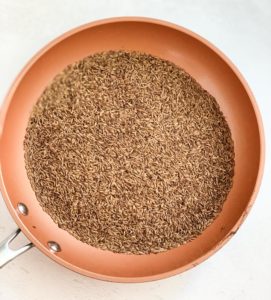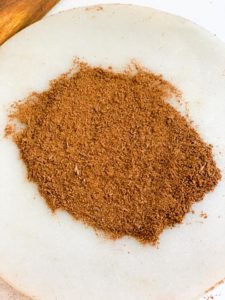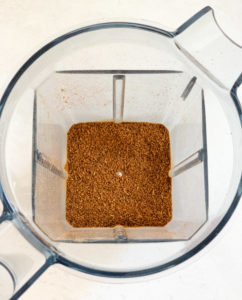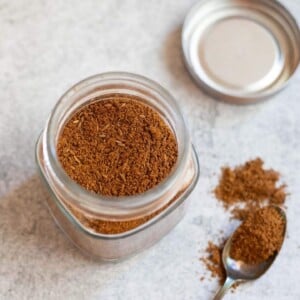We always keep ground cumin and roasted ground cumin powder at home. Ground cumin is typically added to spice blends such as chili powder and curry powder. It is added to dishes that are still to be cooked, e.g., soup, stews, curries, etc. Roasted cumin powder is added to already cooked dishes, such as yogurt, raita, or chaat recipes. My mom was visiting recently, and she made a big batch of roasted cumin powder for me. I get lazy sometimes to make the effort to roast and grind (even though it just takes 10 minutes 🙄). So here is the most authentic mom’s way of making roasted cumin powder. You will also see her hands in the step-by-step photos below. Also, check out authentic homemade North Indian Garam Masala, Coriander Powder, and Chai Masala recipes. But let’s start with learning about cumin seeds, their benefits, and their uses.
Watch How to Make Cumin Powder | Jeera Powder
What is Cumin Seeds?
Cumin seeds, known as Jeera in Hindi, come from a flowering plant called Cuminum Cyminum, which is a member of the parsley family. It is mostly grown in India, North Africa, and the Middle East. Cumin seeds look like caraway seeds but are a bit longer and boat-shaped. They have a distinctive warm, earthy flavor with mild bitter undertones and an aroma that wafts around as hints of lemon. In Indian cuisine, cumin seeds are used for tempering when cooking a curry or stir fry. They are typically the first ingredient added to hot oil, so the flavor infuses into the oil. Store cumin seeds in a dry, cool place in your pantry away from direct light. If storing cumin seeds for a long time, it is best to freeze them to maintain their flavor and aroma. Curious about Indian Spices? Check out my detailed guide for Indian Spices & Herbs.
Benefits of Cumin
While this spice gives any dish a whole lot of flavors, it also comes with many wonderful health benefits:
It has anti-aging properties and antioxidants and is rich in Vitamin E. It works great for digestion and is also an antiseptic and diuretic. It effectively aids in weight loss as it helps in burning calories faster. It is good for the skin, prevents diabetes, and boosts immunity. If you are a new mother, cumin seeds water helps improve lactation.
Other than these benefits, Cumin has been used for centuries as a medicine to treat respiratory illnesses like asthma, bronchitis, anemia, common cold, etc.
What is Cumin Powder?
Cumin powder, also called Jeera powder or Ground Cumin, is a staple pantry ingredient in many cuisines. As the name suggests, ground cumin is made from cumin seeds. However both have a different flavor profile and are used differently in cooking, Cumin seeds release their aroma when added to oil or butter, while ground cumin mixes with the dish and enhances the taste. While cumin seeds can be stored for up to a year, ground cumin is best made fresh and loses its aroma and flavor in under a month. This is the main reason why making fresh ground cumin at home in small batches is best for cooking.
Roasted Cumin Powder
Roasted cumin powder, called Bhuna Jeera in Hindi, is made by dry roasting cumin seeds and then grinding them to a fine powder. Unlike cumin seeds, roasted ground cumin can be added to a recipe at any time, as its flavor doesn’t need heat to be released. Roasted cumin powder has a far more enhanced flavor profile than ground cumin. Essentially, ground cumin comes in handy when you are using it as a spice addition while making a dish or as a medicine. But roasted cumin powder is a more fragrant version of cumin that adds an earthy aroma along with a slightly peppery and citrus flavor. Ground cumin is a rich source of iron and can improve your blood cholesterol levels. It also has anti-cancer and anti-inflammatory properties. You will find that the home-roasted bhuna jeera is much more flavorful compared to the cumin powder you get at the market. The main reason is that cumin slowly loses its aroma and flavor once it is ground. Hence, fresh is best in the case of ground spices.
Cumin Seeds to Ground Cumin
The journey of cumin seeds to roasted ground cumin powder is a very easy one. All it requires is a few simple steps, and your cumin powder is ready for use. You can make this as one big batch to use in a month and store it. It is best to store ground cumin in an air-tight container in a cool, dry place. Let’s see how to make roasted cumin powder:
Roasting Cumin Seeds
Use a heavy bottom iron girdle or pan for roasting cumin seeds. It is best to use a heavy bottom pan as they tend to pop up a bit. Heat the pan on medium heat and add the cumin seeds. Sauté the cumin seeds for a while until you get a wonderful aroma and see the seeds turning dark brown. Then, transfer the cumin seeds to a plate.
Making Cumin Powder without a grinder
This method works well for small quantities. The cumin seeds should be a bit warm so they break easily.
Place a small amount of roasted cumin seeds on a rolling base (chakla). Roll the rolling pin over the seeds while gently applying pressure. As the seeds ground, you will need to collect the seeds/powder back to the center of the rolling base. Keep rolling till you get a coarse powder.
Making Cumin Powder using a grinder
Follow the same steps as above to roast the cumin seeds. Transfer the roasted seeds to a plate and let them cool completely. Once they cool down to room temperature, transfer to a grinder to make a coarse or fine powder. You can also use a spice grinder to make roasted cumin powder. If you are making ground cumin powder minus the roasting part, then you can blitz it in a grinder. However, don’t forget to grind in small batches, as it starts losing its flavor after a month or so. Store ground cumin in an airtight container to prevent the aroma from escaping. The same applies to roasted cumin powder.
Tips to Make Perfect Jeera Powder
Always roast the cumin seeds on medium heat; otherwise, the seeds will burn easily. Keep stirring continuously so that all the seeds are evenly roasted. Grind the seeds only after they have cooled down completely if you are using a grinder. This avoids the moisture setting in and won’t make the powder go bad. Store in an air-tight container in a cool and dry place to preserve the taste.
How to use Cumin Powder?
Even though ground cumin and cumin seeds are of the same spice, they have their own individual taste profiles and are used differently in recipes. Whole cumin seeds are added early in recipes as they release their flavors and aroma as they are heated (with or without oil). Meanwhile, ground cumin powder mixes and improves the overall taste of the dish. Ground cumin is used in many marinades and spice blends, such as Garam Masala. Cumin seeds are traditionally used in tempering and as a flavor-enhancing spice base for curries. Ground cumin powder is added to dishes while cooking, and the roasted version can be sprinkled over cooked dishes and served. Additionally, if you are wondering whether you can substitute the ground cumin for the cumin seeds, then the answer is no, as they have completely different tastes.
Recipes with Cumin
Cumin Rice – Perfectly cooked fragrant Basmati Rice flavored with whole cumin seeds and other whole spices. Keema Matar – This Ground Chicken Curry has wonderful flavors from whole spices as well as ground spices such as cumin and coriander. Roasted Red Pepper & Carrot Soup – This vegan and gluten-free soup has deep, bold flavors and uses ground cumin to enhance the flavor. Dahi Vada – In this yogurt recipe, roasted cumin powder is used as a garnish to enhance the taste of the final dish.
Where to Buy
Whole cumin seeds can be found in the spice section of most grocery stores. They are also sold at It is often cheaper to buy cumin seed at an international market catering to Latin American, Indian, North African, or Middle Eastern cuisine. Ground cumin is readily available in the spice aisle at most grocery stores. If yu are unable to find cumin seeds, here are some cumin substitutes you can consider. Hope you try making and using freshly ground cumin in your recipes.
Curry Leaves – How to Buy, Use & Store?
How to Make Chickpea Flour | Gram Flour | Besan
15 Popular Indian Spice Mixes
Substitutes for Asafoetida
